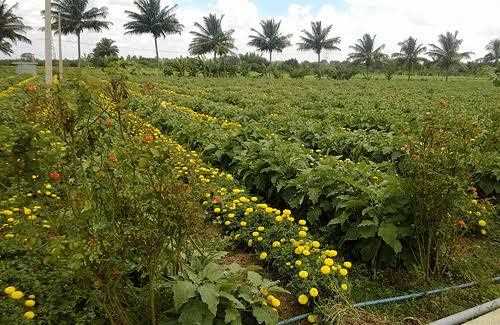Mixed cropping, also known as intercropping, is a farming technique that involves growing two or more crops together on the same piece of land. This technique offers several advantages over monoculture farming, where only one crop is grown on a particular piece of land. In this answer, we will discuss the advantages of mixed cropping.
- Diversification of income: Mixed cropping allows farmers to grow multiple crops on the same land, providing them with a diversified source of income. This reduces the risk of crop failure and income loss that can occur with monoculture farming, where farmers are solely reliant on one crop.
- Efficient use of resources: Mixed cropping maximizes the efficient use of resources such as land, water, and nutrients. Different crops have different nutrient requirements and grow at different rates, so by growing them together, the soil's fertility is maintained, and the nutrient requirements of each crop are met. This can result in higher yields and a reduced need for external inputs such as fertilizers.
- Pest and disease management: Mixed cropping can reduce the incidence of pests and diseases, as the presence of different crops can disrupt the life cycle of pests and prevent the spread of diseases. Additionally, some crops can act as natural repellents or attractants for pests and beneficial insects, further aiding in pest management.
- Soil conservation: Mixed cropping can improve soil health and fertility by reducing soil erosion and increasing soil organic matter. The root systems of different crops can help to stabilize the soil and improve soil structure, leading to better water infiltration and retention.
- Climate resilience: Mixed cropping can enhance the resilience of farming systems to climate change. By growing a diverse range of crops, farmers can adapt to changing weather patterns, such as drought or excessive rainfall. This can help to ensure food security and reduce the vulnerability of farming communities to climate-related shocks.
- Improved crop productivity: Mixed cropping can result in higher overall crop productivity, as the presence of different crops can create a more diverse and balanced ecosystem. This can lead to improved soil health, reduced pest and disease pressure, and improved nutrient cycling.